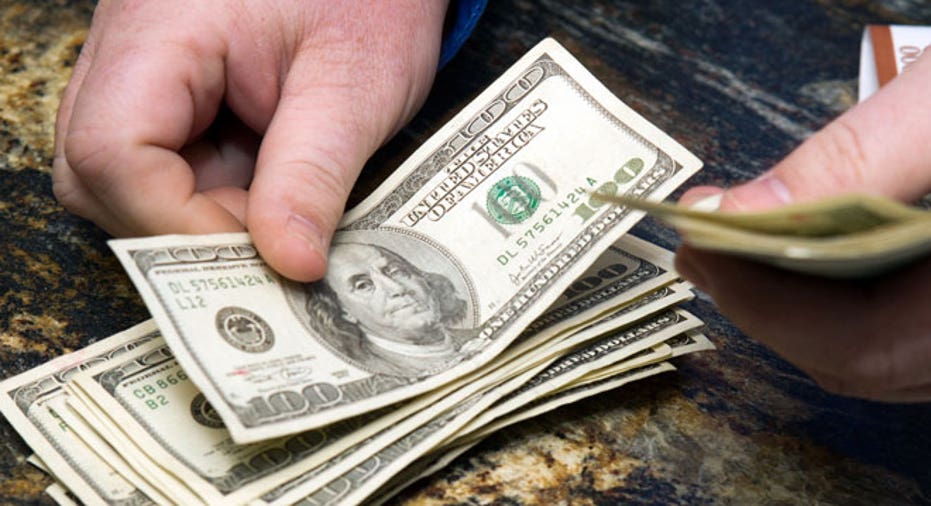All About the Benjamins: Robust Demand for the Underworld's Favored Currency

The ubiquitous and innocent $1 bill seems to be losing serious ground to its darker, more ominous $100 cousin, which is a staple in the underground world of drug trafficking and tax evasion.
Exacerbating a secular trend away from smaller currencies, the U.S. printed more than 3 billion C-notes in the 12 months ended October 31, 100% more than the average of the prior five years and surpassing the production of $1 bills by a billion.
Given its role in everything from arms dealing to terrorist financing, the soaring demand for the $100 bill suggests that the world’s underground economy is alive and kicking even as the legitimate economy remains sluggish.
“The state of the underworld is strong, that’s the bottom line,” said Nicholas Colas, market strategist at ConvergEx.
The latest money-printing numbers also highlight an electronics-driven push away from using cash for everyday purchases in favor of credit cards, debit cards and even smartphones.
U.S. Ramps Up C-Note Production
The Fed, which replaces old bills with new ones based on wear and tear, printed just 2 billion $1 bills last fiscal year, compared with an average of 2.6 billion over the past five years.
Simultaneously, the U.S. ramped up printing of the $100 bill, producing 3 billion C-notes last fiscal year, compared with a five-year average of 1.3 billion.
This suggests there is a growing demand for the larger bill even as individuals increasingly shun smaller denomination currencies. At least some of this demand likely comes from illegal activities like drug smuggling, arms dealing and tax evasion.
The $100 bill “is the standard currency of a lot of different things, some of them are legitimate and some of them are not,” said Colas, who notes that $1 million in $100 bills fits perfectly inside a 5” aluminum attaché case, just like in the movies.
Still the World’s Reserve Currency
There are other examples of demand for $100 bills surging, such as in 1999 when the U.S. printed 1.5 billion C-notes ahead of Y2K and in 2010 in the aftermath of the financial crisis when the government produced 1.9 billion.
While the recent demand for large-denomination currency may be seen as a negative, there is an upside to this phenomenon: people of all ilk still prefer the greenback.
Despite ominous predictions of the demise of the dollar, these statistics suggest that the U.S. currency hasn’t lost its very advantageous role as the world’s currency of choice.
“Just like modern online networks, the more people who use a currency validate its status,” said Colas. “A ‘Reserve Currency’ must be all things to all people…Even really nasty people.”
But the $100 bill is facing competition from across the Atlantic as the favorite of criminals.
According to Jim Rickards, author of Currency Wars, the preferred currency for major illegal activities is increasingly the 500 euro bill.
The large euro denomination doesn’t really have a U.S. equivalent and is also far easier to transport. Rickards said $1 million of 500 euro notes would weigh just 4 lbs., compared with about 22 lbs. for $1 million of $100 bills.
Inflation Indicator?
Besides the role of the seedy underworld, there are a number of potentially more innocent explanations for the rising demand for the $100 bill.
Colas said the U.S. appears to have under produced C-notes in 2011, printing just about 723 million of the bills.
Some have speculated part of the 2012 ramp-up may have been influenced by the brand new $100 bill, which has been mired in quality issues.
However, Colas notes that the government has not yet officially announced a launch date for the new currency and reports of the bills slipping into circulation have yet to leak out on the Internet either.
It’s also possible concerns about actual and potential inflation, fueled by the Fed’s unprecedented easy-money policies and artificial money printing, have lowered demand for $1 bills.
“Maybe it’s telling us something about the impact of inflation around the world,” said Rickards, senior managing director at Tangent Capital. “Maybe it means the $100 bill is the new $1 bill."
Rickards said the rising demand for C-notes could also send a fiscal message to lawmakers in Washington.
“Maybe it’s telling us taxes are too high and people are more motivated to go into tax evasion,” said Rickards.